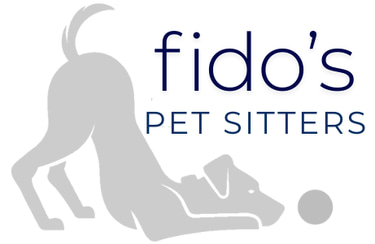How to Create the Perfect Diet for Your Dog or Cat
Discover how to keep your furry friends happy and healthy with a balanced diet tailored to their unique needs. Learn the essentials of pet nutrition, including the importance of high-quality proteins, healthy fats, and vital nutrients. Explore tips for choosing premium pet food, incorporating fresh, whole ingredients, and setting proper feeding schedules. Whether you’re considering homemade meals or managing portion control, this guide ensures your dog or cat gets the best care. Keep them thriving with expert-backed advice and practical solutions for optimal health.
PET CARE DOG TRAININGPET CARE TIPSNUTRITION FOR DOGS HEALTHY DIETS FOR DOGS
Paul O'Shea
12/1/20242 min leer


How to Create the Perfect Diet for Your Dog or Cat
When it comes to your furry family members, nutrition is the foundation of their overall health and happiness. Just like humans, dogs and cats thrive on a well-balanced diet tailored to their specific needs. But with so many pet food options available, creating the perfect diet can feel overwhelming. Let’s break it down into simple steps to help you provide your dog or cat with the nutrition they deserve.
Understand Their Nutritional Needs
Dogs and cats have different dietary requirements. Dogs are omnivores, meaning they can eat a variety of foods, including meat, grains, and vegetables. Cats, on the other hand, are obligate carnivores, which means their diet must primarily consist of animal-based proteins.
For both pets, the key components of a balanced diet include:
Protein: Essential for muscle development and repair.
Fats: A source of energy and essential fatty acids for a shiny coat and healthy skin.
Carbohydrates: Provide energy but should be limited, especially for cats.
Vitamins and Minerals: Support various bodily functions, including immunity and bone health.
Choose High-Quality Pet Food
The easiest way to ensure your pet gets the right nutrients is by selecting a high-quality commercial pet food. Look for options labeled “complete and balanced,” as these meet the nutritional standards set by organizations like AAFCO (Association of American Feed Control Officials).
When reading labels, prioritize brands that:
List a named protein (e.g., chicken, beef, or salmon) as the first ingredient.
Avoid artificial preservatives, colors, and fillers.
Use whole grains or vegetables rather than by-products or unnecessary additives.
If your pet has specific health issues, such as allergies or a sensitive stomach, consult your vet for recommendations on specialized diets.
Incorporate Fresh, Whole Foods
Adding fresh foods to your pet’s diet can enhance their nutrition and make mealtime more exciting. Some safe options include:
Dogs: Cooked lean meats, carrots, green beans, and small amounts of rice or sweet potatoes.
Cats: Cooked chicken or turkey, small amounts of plain fish, or steamed vegetables like spinach.
Always introduce new foods gradually and avoid ingredients toxic to pets, such as onions, garlic, grapes, and chocolate.
Portion Control and Feeding Schedules
Overfeeding is a common issue that can lead to obesity and related health problems. Check the feeding guidelines on pet food packaging and adjust based on your pet’s size, age, and activity level.
For dogs, two meals a day is standard. Cats often prefer smaller, more frequent meals. Avoid free-feeding unless medically advised, as it can encourage overeating.
Consider Homemade or Raw Diets Carefully
Some pet owners opt for homemade or raw diets to have full control over their pet’s food. While this approach can be beneficial, it requires careful planning to avoid nutrient deficiencies. Always consult with a veterinarian or pet nutritionist before making this switch to ensure the diet meets your pet’s needs.
Stay Hydrated
Fresh water is essential for both dogs and cats. Make sure clean water is always available and encourage your pet to drink, especially if they eat dry kibble. Cats, in particular, can benefit from wet food to support hydration.
Creating the perfect diet for your dog or cat doesn’t have to be complicated. By understanding their nutritional needs, choosing quality food, and adding a touch of fresh, healthy ingredients, you can ensure your pet stays happy, healthy, and full of energy. As always, work with your vet to customize your pet’s diet for their unique needs and watch them thrive! 🐾
